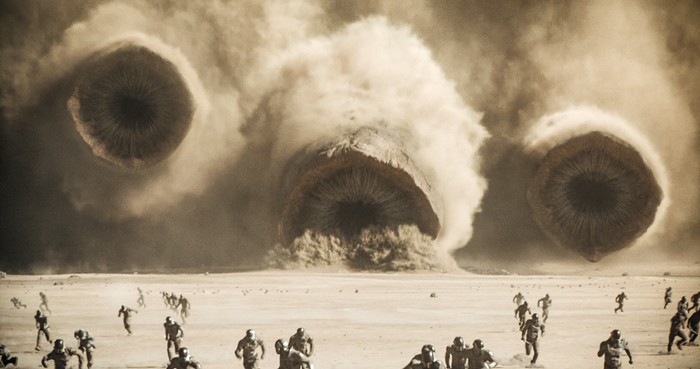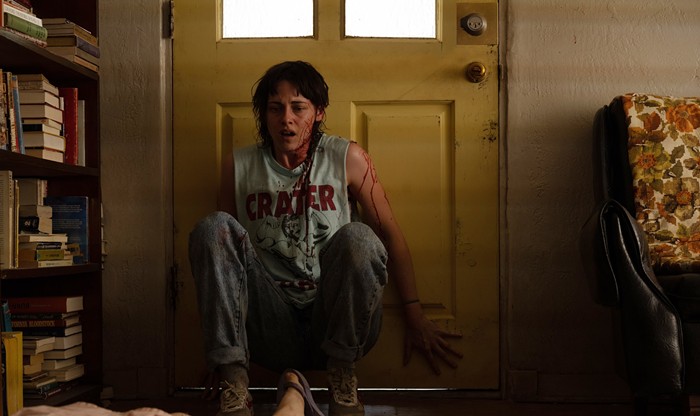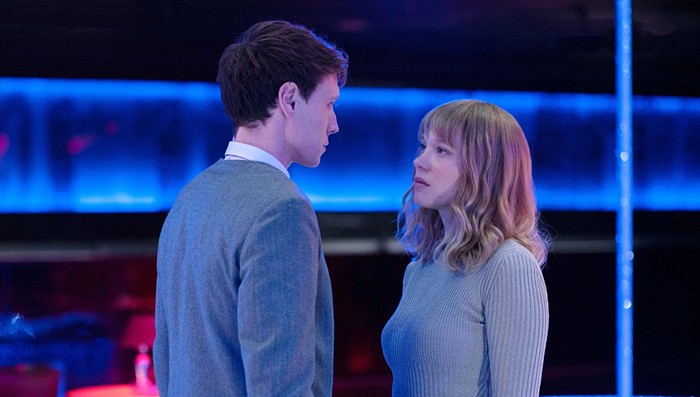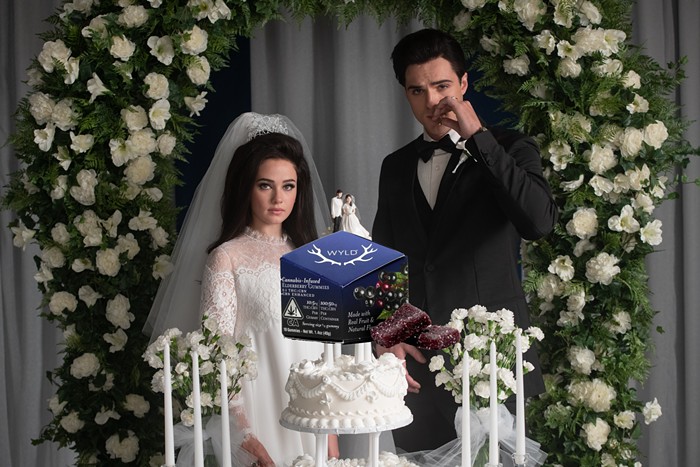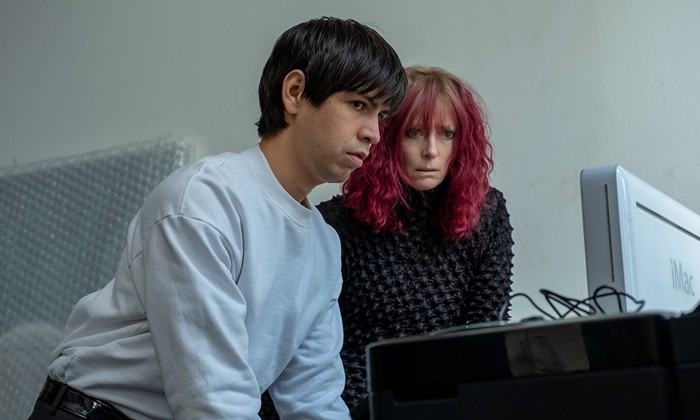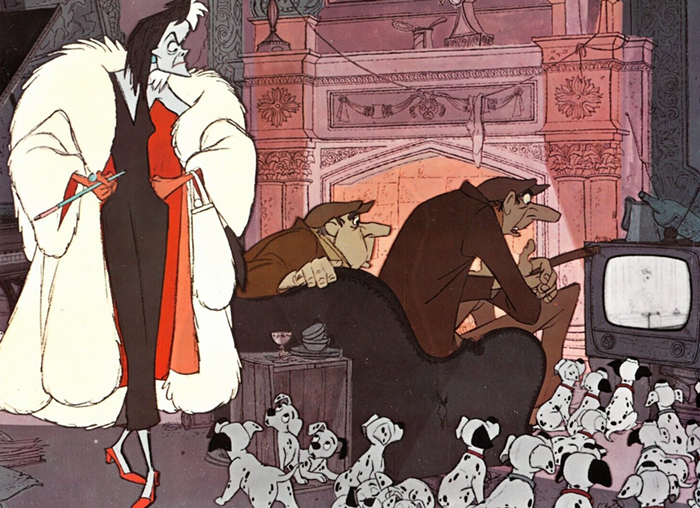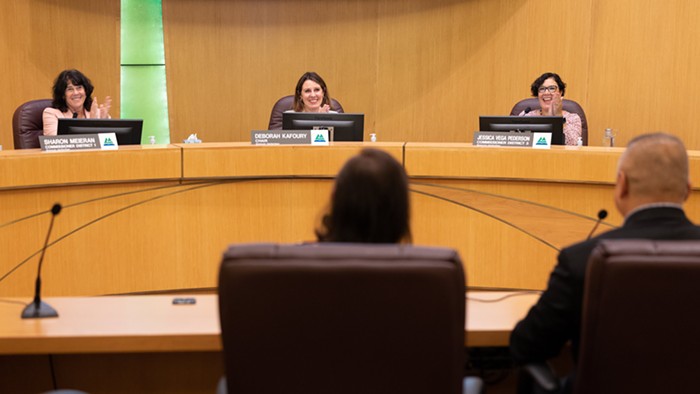
- Kate Holly
- Sam Green and Yo La Tengo
Just gonna put it out there: I pretty much want to live in The Love Song of R. Buckminster Fuller, the live documentary written and performed by filmmaker Sam Green and scored by Yo La Tengo (originally commissioned by the San Francisco Museum of Modern Art to be performed during the 2012 San Francisco International Film Festival).
Last night at Washington High School, as Yo La Tengo played behind Green's friendly narration and slideshow of videos and stills detailing the life of Buckminster Fuller, I was reminded that strong entertainment value and contemporary art aren't mutually exclusive forces. This reminder has become something of a TBA tradition: each year I'm bombarded with challenging art of elusive value/meaning, I get tired, frustrated, etc., and then in the middle of the hairiness something just blows me away with its entertainment value, relevance to everyday life, and clear and present meaning (sans unnecessary codifications or large, showy art moves). In short, I left Love Song with the same sort of joy for storytelling that I walked away with after seeing Mike Daisey perform The Agony and the Ecstasy of Steve Jobs at TBA:10. That's a tall order, and I couldn't be more happy with this particular 'art is worthwhile' moment.
Personal reactions aside, Love Song is Green's account of the life of once famed but nearly forgotten inventor, engineer, mathematician, social theorist, writer, and lecturer Buckminster Fuller (who lived from 1895-1983).

- Kate Holly
- Fuller, Dymaxion car, geodesic dome
Fuller was a pretty wild dude. While he's best known for his work with geodesic domes, that's just the tip of the iceberg. He lived under a self-designed set of principles which he grouped under the “Dymaxion” banner (Dymaxion being a combination of the words dynamic and maximum). Fuller's central Dymaxion principle was— I'm paraphrasing closely— that all of humanity could share a quality of life yet to be achieved by any society if natural and technological resources were designed and distributed at a maximum level of efficiency. Under this principle he designed the three-wheeled Dymaxion car, the space-age, domed Dymaxion house (designed for streamlined mass manufacturing), and even something called cloud nine (a city that was intended to float in the sky inside a geodesic sphere— heyo!).
But while Fuller's professional and intellectual achievements are great and many and inspiring, it was as much the biographical details of the polymath's life that got me. Fuller was a walking picture of hardships endured and bested: he was ousted from his first business by a hostile investor, the Dymaxion car was a gigantic PR failure due to a prototype's involvement in fatal crash just before the new automobile was to be unveiled at the World's Fair, and the Dymaxion house never graduated to ranks of mass manufacturing despite public interest. Examples continue.
Yet, without a doubt, the most daunting hardship that Fuller carried through his life was the loss of his daughter, who died in childhood from spinal meningitis. Her passing led him to the brink of suicide before he decided to relaunch his life as a “search-and-research project” to see what “an unknown, moneyless individual, with a dependent wife and newborn child, might be able to do effectively on behalf of all humanity that could not be accomplished by great nations, great religions, or private enterprise, no matter how rich or powerfully armed,” Fuller explains in his final manuscript, Guinea Pig B.

- Kate Holly
- The Dymaxion Chronofile in storage at Stanford University
He documented this experiment with the Dymaxion Chronofile— considered to be the most complete documentation of a single person's life, made up of virtually every piece of paper Fuller touched from 1920 through his death in 1983 (it's claimed that an entry was made every 15 minutes)— the contents of which acted as Green's primary source for the materials that went into Love Song.
But enough with the summary. The performance itself was great (I caught the 8:30pm show). Green is a confident and inviting public speaker. The series of images and videos that he used to illustrate Fuller's story were triggered by a remote kept in hand, allowing for impeccable pacing. Yo La Tengo did a great job keeping in background and setting moods for the various narrative segments— and on several occasions I'd completely forgotten that the music was being played live. Love Song's compositional aspects come together to create a fluid experience— enjoyable, easy to digest, meaningful.
When I spoke with Green and Yo La Tengo's Ira Kaplan, they each positioned Fuller as a figure of hopefulness to be revisited in a time when the future might be looking a little bleak, and that keeps pretty close to Love Song's takeaway: don't let hardships knock you off course, do something for the world, and resynchronize humanity's relationship with technology and natural resources so we can survive on this great “Spaceship Earth,” as Bucky so loving called it.
And on that note, I leave you with the first section of Fuller's 40-hour lecture, Everything I Know:
